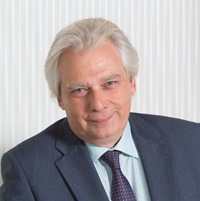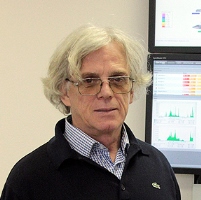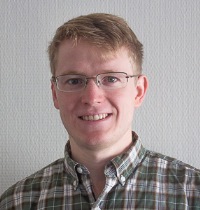Supercomputer Set Up at HSE University
A new supercomputer, which has been recently set up at MIEM, will allow the university to carry out high quality research in deep learning and mathematical modeling. The computer was ranked sixth in the April Top-50 ranking of supercomputers in Russia.
Such institutions as the Tikhonov Moscow Institute of Electronic and Mathematics, the HSE Faculty of Computer Science, Institute for Statistical Studies and Economics of Knowledge, and Centre for Cognition & Decision Making at the Faculty of Social Sciences will utilize the supercomputer in their research activities.

Igor Agamirzian
Vice President, HSE
‘While surveying all HSE departments about the research equipment they required, most respondents noted computation resources as a key necessity. So, when we were planning our architecture and related costs, we assumed that our supercomputer should be in the Top-10, but sixth place was a pleasant surprise nevertheless.’
The supercomputer architecture was devised by the Ivannikov Institute for System Programming and features the most up-to-date elemental base. With rather modest specifications, HSE’s cluster can perform at a very high level. The system is Russia’s leader in terms of graphic accelerators and RAM capacity per cluster node.

Lev Shchur
Scientific Supervisor, Supercomputer Simulations in Science and Engineering Programme
‘Our cluster’s specifications are the best available. The ranking leader, the Lomonosov-2 Supercomputer, has speed of 2.5 petaFLOPS and over 1,500 nodes. Our 24 nodes ensure a speed at 0.5 petaFLOPS. So, we have 50 times less nodes, but the speed is just five times slower. Therefore, our nodes are 10 times more powerful. In addition, we can consider the capacity in terms of specific tasks. For modeling tasks, our cluster ranks sixth, while in terms of deep machine learning, this is the most powerful device in Russia today.
Furthermore, the new technological line from Intel ensures very high capacity and speed with a low numbers of nodes. This thereby simplifies modeling solutions for any processes, be they hydrodynamic or biological. For instance, we can calculate an airplane’s wing flows, or we can build a model of moving cell clusters within blood vessels, thus shedding light on metastases distribution in cancer processes. Another example is one of the applications for my project, which was supported by a grant from the Russian Research Fund. This concerns modeling the flows of multi-component liquids in complex geometry. One more possible application of this research is in regards studying the opportunities for specific use of medications packed in clusters’.
Mathematical modeling is widely employed in engineering. For instance, in the manufacture of radio electronic devices for aerospace research, or equipment for the oil&gas industry. In addition, Digital Twin technology allows us to calculate the specifics and behaviour of a construction project before it gets underway. In machine building, for example, a virtual test of a turbine can help to save a large amount of money at the trial stage, as the model’s performance can fully resemble the object’s behaviour.
Moreover, a supercomputer with 1.5 TByte of high-speed RAM per cluster node will allow MIEM to start designing objects, which would be otherwise impossible without such equipment.
The new supercomputer will considerably expand possibilities for the Faculty of Computer Science, and, in particular, the Laboratory of Methods for Big Data Analysis and the Centre of Deep Learning and Bayesian Methods. For instance, many graphic maps are required for doing research in these departments. Now, the total number of computational capacities available for researchers will grow tenfold!

‘The computer cluster is now equipped with resources, which can deal with necessary computing and optimization tasks, as well as deep learning activities. We hope that, with its help, we can give students an opportunity to learn more about resource-intensive deep learning tools, while our laboratories will be able to generate research results much faster. One of the upcoming projects is a RRF grant project on generative models for Digital Twin technologies. This will be carried out by our laboratory together with the Centre of Deep Learning and Bayesian Methods.’

‘Our centre is developing a theoretical foundation for those engaged in reinforcement learning, as well as applications for image processing and natural languages. We are also developing new learning methods while also relying on deep neural networks – this is a key area of studies in AI today.
Several recent breakthroughs in AI (e.g., computer victories over humans in different games) were based on joint use of neural networks and reinforcement learning. First, it was chess, then Go, and now, cybergames (e.g., StarCraft and DotA). Traditionally, it was believed that humans outperform the computer in tasks related to creativity and intuition, where it’s not easy to calculate all options, or there might be many of them. However, recently, it has become clear this isn’t really the case.
It would be difficult for us to create system, which might outperform a human in StarCraft or Go. In order to do this, we would have to be a huge tech firm with an abundance of computational and human resources. However, we can still improve on the methods, which form the basis for such systems. As we work on cutting edge tasks, which cannot be perfectly solved by private companies, we can take the next steps in this technological development.’
Since some of these tasks require large amounts of RAM, while the other demand graphic accelerators, there is the issue of balancing capacity and resources. Currently, the researchers are looking for technical solutions, which can minimize the side effects from launching different types of tasks on just one computer.
Using the capabilities of the supercomputer for research projects was the focus of the first workshop on high-performance computing, which presented the results of performance tests and modeling experiments. The event attracted representatives of MSU, the Ivannikov Institute for System Programming, Kurchatov Institute, JINR, and several others. Furthermore, there are plans to hold this workshop regularly, every first Tuesday of the month. So, if you have any suggestions for the workshop, please get in contact Professor Lev Shchur.
